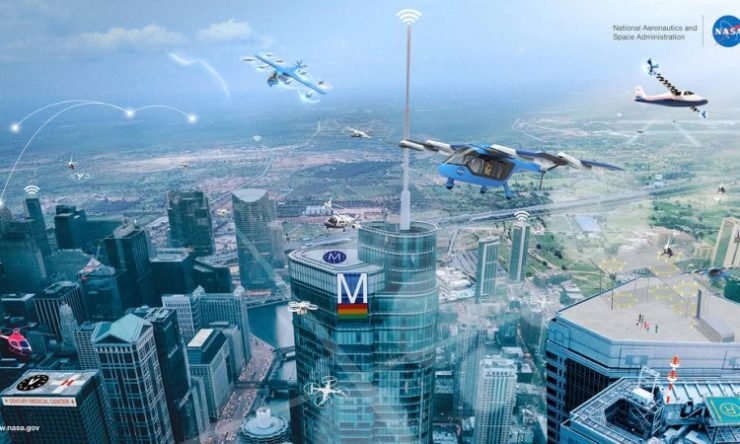Jim Banke, Aeronautics Research Mission Directorate, reports NASA’s aeronautical innovators are embracing a more inclusive vision for the future of air travel in at least one major research area. Their terminology has changed to ‘Advanced Air Mobility’ (AAM).
Davis Hackenberg, NASA’s AAM Mission Manager, says: “In this move we’re talking about updating the words we are using to describe our efforts. AAM represents a bigger vision.”
Yet, NASA’s goals remain the same.“We’re still talking about helping industry safely develop an air transportation system to move people and cargo between places previously not served or underserved by aviation,” continues Hackenberg. “But using revolutionary new aircraft that are only just now becoming possible.”
More recently, employing unmanned aircraft systems (UAS) was primarily focused on their use in the skies over dense urban landscapes.
“That’s where the early market studies showed a realistic potential for a high payoff on investment,” explains Hackenberg. “Large cities offer a high population of customers using many types of services and promised a positive influence on the economy.
“But it didn’t take long before we realised that ‘urban’ wasn’t the perfect word. It became clear there was a much broader interest in these capabilities.”
Hackenberg continues, “Urban Air Mobility-related services could benefit everyone, not just those who live in a big city. Industry was telling us this along with the National Academies and even we were talking about it internally, so it was decided now is the right time.”
This AAM mission has defined two categories of flight operations: local and intraregional. Local flights will be considered as extending out to around 50 miles and back, while intraregional flights will be longer, for example, from Philadelphia to New York City.
Hackenberg explains, “So, our UAM work will continue in our thinking as being local, except there will be more buildings and people involved, as opposed to a 50-mile radius in more rural areas.”
Another change is replacing the title ‘UAM Grand Challenge’ to the ‘AAM National Challenge’. The idea is to demonstrate in a real-world environment the readiness of companies’ vehicles and airspace operators’ systems to fly a full range of passenger transport and cargo delivery scenarios under varying weather and traffic conditions.
Hackenberg concludes, “We’re still challenging industry to come in and perform operational scenarios that would ensure UAM safety and show the public this is real and can be done. We’re just going to use a name that makes more sense.”
For more information




